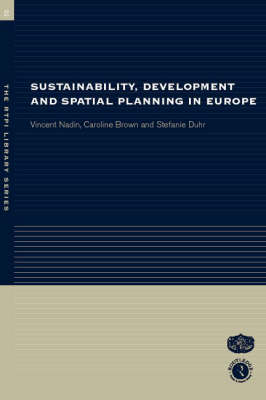RTPI Library
1 primary work • 3 total works
Book 7
At a time when strategic spatial planning is undergoing a renaissance in Europe, The Visual Language of Spatial Planning makes a unique contribution to this rapidly growing area of teaching and research. Discussing the relevant theoretical perspectives on policy-making and planning, combined with cartographic communication and the use of cartographic representations in the planning process, Stephanie Duhr provides conceptual and practical tools to help students and practitioners better understand maps and visualizations in strategic spatial planning. The book is the first to review the form, style and use of cartographic representations in strategic spacial plans in the Netherlands, Germany and England as well as at European level. Significant differences between planning traditions and the impact of these on transnational planning processes are highlighted. It concludes by discussing the practical implications for future strategic spacial planning processes in Europe and the best use of cartographic representations to reach agreement and to focus dialogue.
Sustainability, Development and Spatial Planning in Europe
by Vincent Nadin, Caroline Brown, and Stefanie Duhr
Published 25 January 2003
The EU has adopted sustainable development as one of its three fundamental objectives and spatial planning has been identified as the principal tool for achieving sustainable development. This comparative study explores the contribution that spatial planning makes to sustainability in Europe by looking at six countries: Finland, Greece, Ireland, Italy, the Netherlands, and the UK - based on in-depth research by national experts. The research underpinning the book is supported by the European commission. Professor Michael Bannon, Ms Aoife Cassidy, Professor Louis Wassenhoven, Dr Popi Sapountzaki, Dr Lena Karka, Dr Maria Berrini, Anna Melone, Mario Miglio, Pakka Lahti, Kari Rauhala, Professor Barrie Ne

